Discover 11 hidden attractions, cool sights, and unusual things to do in Bad Homburg (Germany). Don't miss out on these must-see attractions: Saalburg, Hessenpark, and Gothic House. Also, be sure to include Taunus Therme in your itinerary.
Below, you can find the list of the most amazing places you should visit in Bad Homburg (Hesse).
Table of Contents
Saalburg
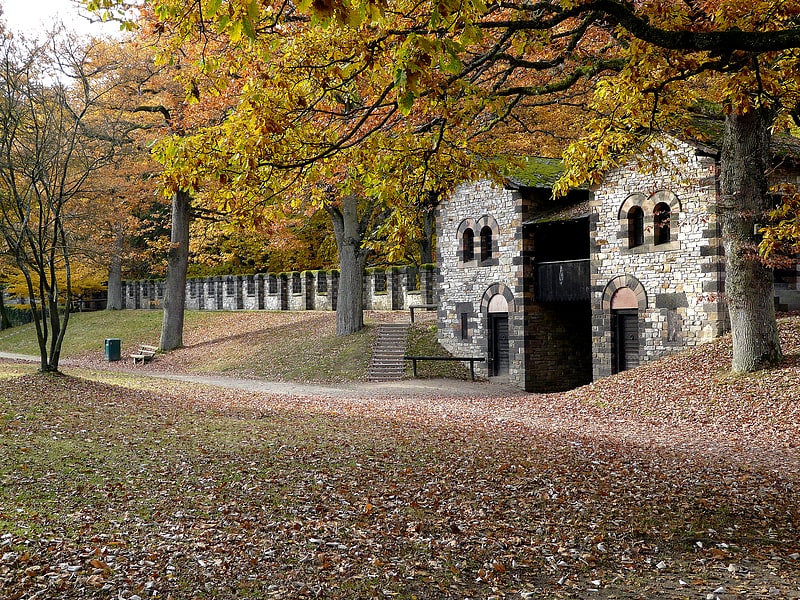
Reconstructed Roman fort and museum. The Saalburg is a Roman fort located on the main ridge of the Taunus, northwest of Bad Homburg, Hesse, Germany. It is a cohort fort, part of the Limes Germanicus, the Roman linear border fortification of the German provinces. The Saalburg, located just off the main road roughly halfway between Bad Homburg and Wehrheim is the most completely reconstructed Roman fort in Germany. Since 2005, as part of the Upper German limes, it forms part of a UNESCO World Heritage site. In the modern numbering system for the limes, it is ORL 11.[1]
Address: Saalburg 1, 61350 Bad Homburg vor der Höhe
Hessenpark
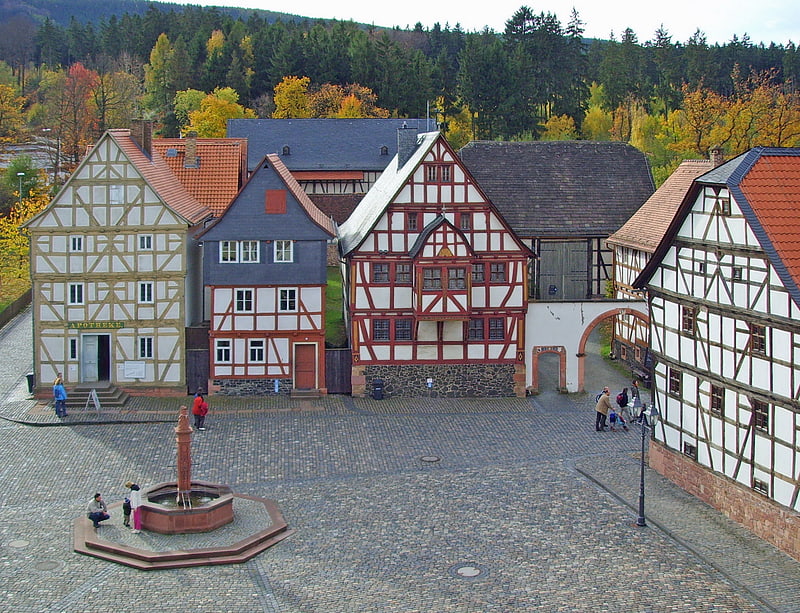
Open-air 'living museum' on rural life. The Hessenpark is an open-air museum in Neu-Anspach, Hesse, Germany. It was founded in 1974 by the Hesse State Government headed by Albert Osswald.
The museum showcases half-timbered buildings from the land of Hesse. As of 2006, there were almost 100 houses on display.
The Hessenpark is a popular family destination.[2]
Address: Laubweg 5, 61267 Neu-Anspach
Gothic House
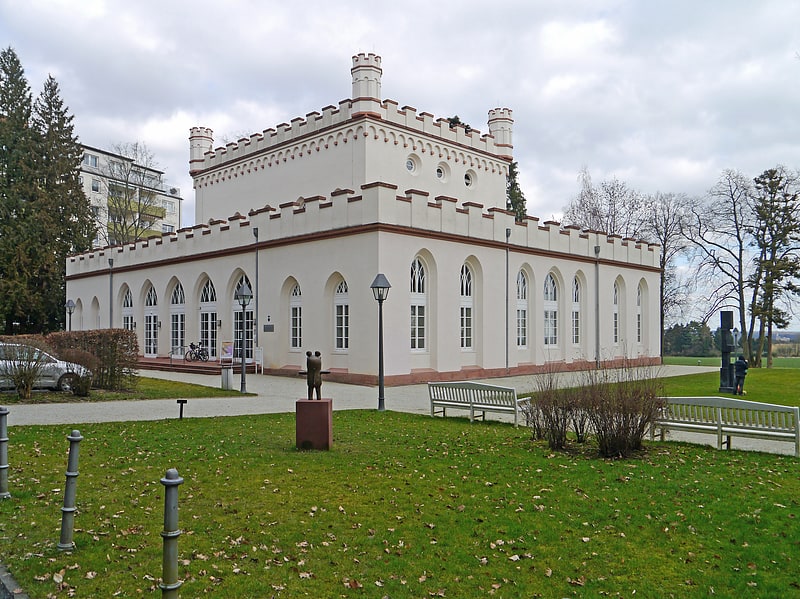
Also known as: Gotisches Haus
Museum in Bad Homburg vor der Höhe, Germany. The Gothic House is a jagdschloss in the Dornholzhausen district of Bad Homburg, just within the town boundary and at the end of the Tannenwaldallee, which forms a direct link between Bad Homburg Castle and the Gothic House.[3]
Address: Tannenwaldweg 102, 61350 Bad Homburg vor der Höhe
Taunus Therme

Watersports, Spa, Cinema, Gym, Water park, Swimming, Amusement park
Address: Seedammweg 10, 61352 Bad Homburg
Church of the Redeemer

Also known as: Erlöserkirche
Building in Bad Homburg vor der Höhe, Germany. The Church of the Redeemer of Bad Homburg belongs to the Protestant Church in Germany. Finished in 1908, the building is outwardly of a heavy, Romanesque Revival appearance, while its interior is held in a neo-Byzantine style, with rich marble wall decorations and gold mosaics covering the domed ceiling, leading to the church sometimes being called 'Bad Homburg's Hagia Sophia'.[4]
Address: Dorotheenstraße 1, 61348 Bad Homburg vor der Höhe
Bad Homburg Castle
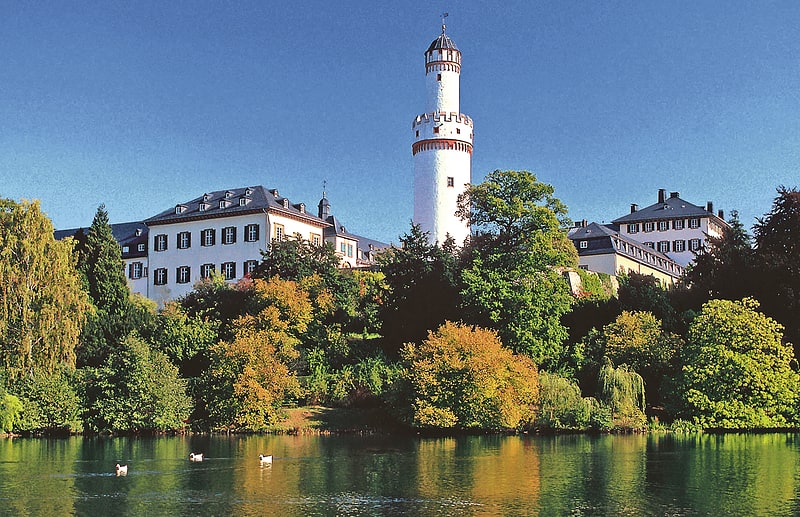
Also known as: Schloss Bad Homburg
Museum in Bad Homburg vor der Höhe, Germany. Bad Homburg Castle is a castle and palace in the German city of Bad Homburg vor der Höhe. Originally the residence of the Landgraves of Hesse-Homburg, it was first built in the 12th century. All but the keep was demolished in 1660 by Frederick II, Landgrave of Hesse-Homburg. He replaced the old castle with a new one designed by Paul Andrich between 1680 and 1685. Its grounds and gardens were landscaped in the 18th and 19th centuries, including the addition of the Gothic House.
It was inherited by Hesse-Darmstadt after Prussia's annexation of Hesse-Homburg in 1866 following the Austro-Prussian War, becoming a summer residence for the kings of Prussia. William I stayed at the castle several times, as did his son and successor Frederick III and Frederick's wife Victoria. The castle was a particular favourite of Frederick and he and his successors added bathrooms, telephone rooms and electricity and merged some rooms. After 1918 the castle was administered by the Prussian state and from 1945 by the state of Hesse. From 1947 it housed the Verwaltung der Staatlichen Schlösser und Gärten Hessen (Hesse Administration for State Castles and Gardens).[5]
English Church
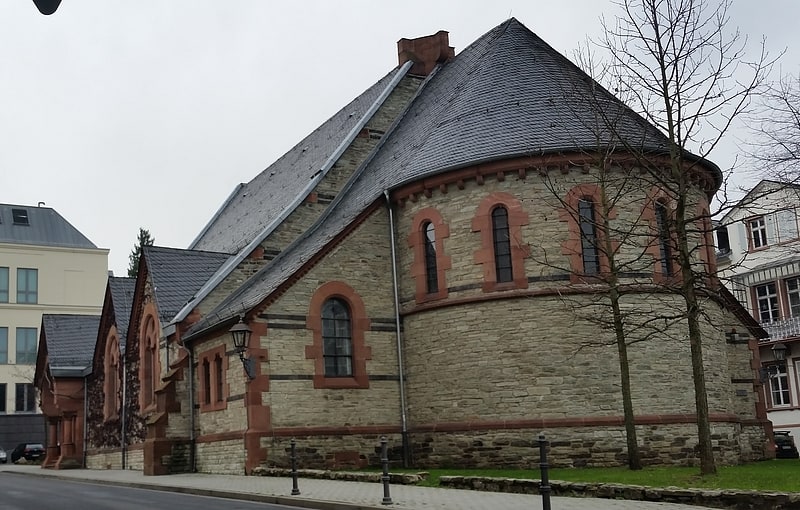
Also known as: Englische Kirche
Cultural center in Bad Homburg vor der Höhe, Germany. The English Church is a former Church of England church building in the German city of Bad Homburg in Hesse. It is listed as a historic monument and now houses a cultural centre.[6]
Address: Ferdinandstraße 16, Bad Homburg
Museum Sinclair Haus
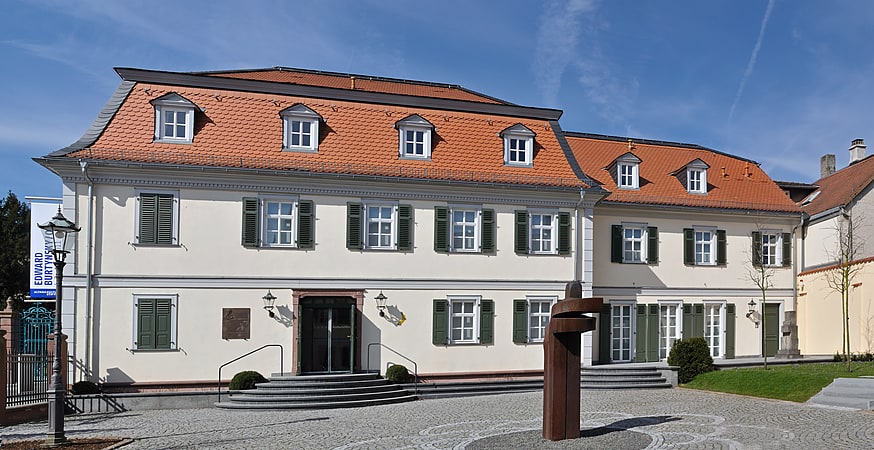
The Museum Sinclair-Haus in Bad Homburg vor der Höhe is an interdisciplinary exhibition house for art and nature and an institution of the Stiftung Kunst und Natur gGmbH.
Since 1982, the Museum Sinclair-Haus has presented temporary exhibitions that focus on the multi-layered relationships between humans and nature. The interdisciplinary exhibitions and events explore ways of perceiving, understanding and reflecting on nature in the mirror of the arts. In this way, the museum illuminates the interconnections between nature, culture and science and opens up new perspectives on their interaction.
Since 2017 the museum has been part of the Nantesbuch Foundation, and since 2021 the foundation has been trading under the name of the Art and Nature Foundation.
At its places of action Bad Homburg vor der Höhe and Nantesbuch (Upper Bavaria), the foundation offers spaces and formats for sensory experience and interdisciplinary engagement with art and culture as well as nature and landscape. In this way, it wants to contribute to a society that lives in harmony with its natural and diverse cultural foundations and that, based on knowledge, acts with a sense of responsibility and respect. Art and nature provide decisive impulses for the shaping of such a society.
Event and mediation formats
The exhibitions of the Museum Sinclair-Haus are accompanied by events such as lectures, readings, concerts and experimental formats live and digitally. The respective guests from the sciences and arts are invited to expand the exhibitions through diverse thematic aspects and forms of expression.
Aesthetic education is a central concern of all activities at the Museum Sinclair-Haus. A team of artists and art educators develops a program for each exhibition that conveys the exhibition's themes in a multifaceted way to all visitors, children and adults alike. Interdisciplinary offers link art, science, music, literature and dance and open up new spaces for thought and action. Cooperations with schools, universities and other educational institutions are an integral part of the educational work.
Address: Löwengasse 15, 61348 Bad Homburg vor der Höhe
Galerie

The listed house Dorotheenstraße 5 on Dorotheenstraße in Bad Homburg vor der Höhe was built as a French Reformed church and is now an exhibition house.
Sankt-Marien-Kirche
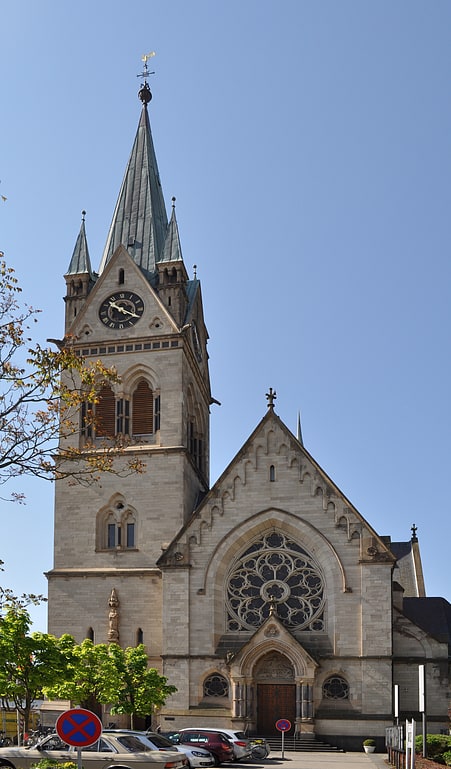
The Marienkirche or St. Mary's is the main Roman Catholic church in Bad Homburg vor der Höhe. Like many other houses in Dorotheenstraße, it is a listed building. It is the parish church of the pastoral area Bad Homburg-Friedrichsdorf in the church district Hochtaunus.
Address: Dorotheenstraße 13, 61348 Bad Homburg vor der Höhe
Laternenfestbrunnen
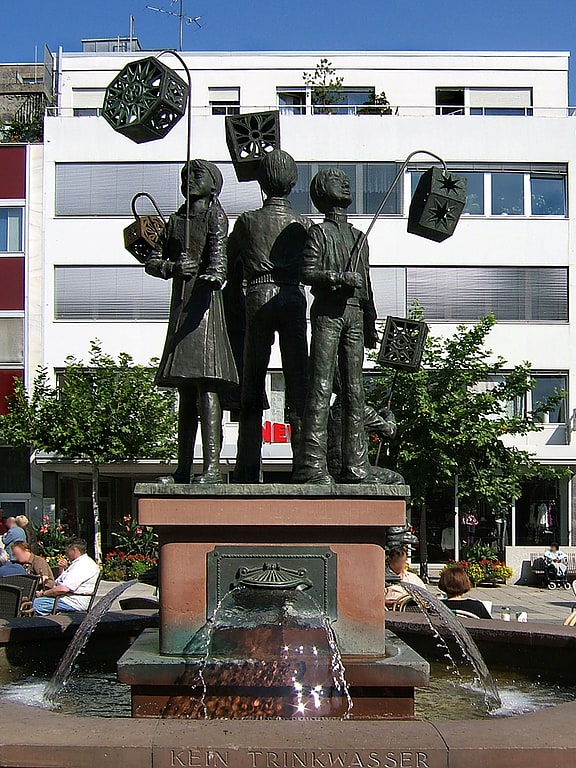
The Lantern Festival is the largest and most traditional folk festival in the Taunus region and has been celebrated in Bad Homburg since 1935.
Every year, over 500,000 guests visit the festival, which takes place at the end of August/beginning of September. The Louisenstraße offers a wide range of products with over 200 booths. On the fairground there is a range of about 10 rides. A highlight is the parade, which alone attracts up to 150,000 people. A variety of musical and cultural events are part of the festival program. A greyhound race has been held since 1960.
The special character of the festival lies in the eponymous illumination by lanterns. The lighting of the city center and the procession is done on private initiative.